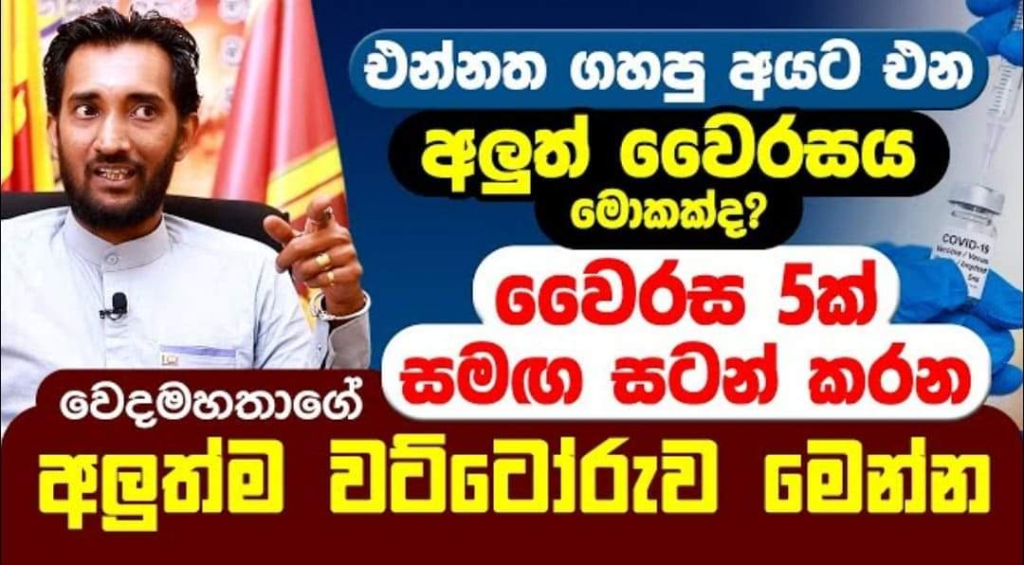Recently State Minister of Tourism Diana Gamage talked about the possibility of bringing Disneyland to Sri Lanka. The minister stated that Disney management has talked with her and that the ministry is hoping to bring Disneyland to Sri Lanka. She further mentioned that she will inform the media when those talks materialize/when the officials visit Sri Lanka. The minister is yet to provide any details regarding the matter.
True, the idea of Disneyland in Sri Lanka may be an ambitiously entertaining thought. But perhaps, what’s even more amusing is what followed the minister’s comments. On Sunday, Daily Mirror‘s Associate Editor Jamila Hussein tweeted “Diana walking the talk!” and mentioned that a team from Disneyland will be visiting the island to talk about Southasia’s first Disneyland in Hambantota. The tweet further claimed that Gamage will be visiting the US soon to talk about the “$18 billion investment.” The tweet turned into a top story for Daily Mirror and it even graced the front page of its paper. Jamila’s tweet was also picked up by Ada Derana as well as Indian media NDTV. The kicker? None of it was true.
The actual story
Here’s what really happened. Shortly after minister Gamage’s comments, someone decided to create a “[email protected]” address and email Daily Mirror‘s editor accompanied by a fake press release. The email mentioned that Alexia S Quadrani, SVP, Investor Relations at Disney invited the minister to Burbank to talk about potentially setting up a Disneyland in Hambantota. It also stated that the supposed park will amount to $16 – 18 billion. Despite being fake, Daily Mirror decided to run this story.
Wait, how do we know that this was fake in the first place? Well, it’s because we were forwarded the same email. The sender “Prankster 69420xxx,” mentioned that the original email was never from Diana Gamage’s Media Unit and that the whole idea of sending that email is to show how little verification happens in mainstream media when it comes to certain stories.

We’re not going to get into the nitty gritty of this ill-informed reporting from one of the biggest newspapers in the country. But in case you’re looking for more context, this Twitter thread might help.
Daily Mirror never corroborated the story and never retracted the article despite the obvious implications. To make matters worse, the paper actually doubled down and instead opted to change the narrative. This is despite Gamage herself calling Daily Mirror‘s claims fake.
Fake news as a service
While the Disneyland fiasco may come off as comical at most, it highlights a bigger, much more dangerous issue in local media. The fact a stranger was able to create a gmail, craft some fake story, and send it through to media to get it published without any hassle should be alarming. Misinformation/disinformation is already a big problem in the country and the lack of proper editorial standards among national media is an indication of a worsening situation.
Dr. Shafi
We’ve already seen how unchecked streams of stories within the media can be detrimental. Take Dr. Shafi’s case. Back in 2019 following the Easter Sunday attacks, Dr. Shafi Sihabdeen was accused of performing sterilization operations on Sinhalese women. In an intense case of racial injustice, Sihabdeen was vilified by politicians and the media alike. A large part of this was all the misinformation, or more accurately disinformation, that spread across the country. This included everything from Sihabdeen’s qualifications and family background to his son’s school admission
The result was an angered Sinhala Buddhist majority that went on the offensive against the doctor and his family. Sihabdeen was sent on compulsory leave following the sterilization accusations and things only worsened with the family having to deal with death threats on a regular basis. Sihabdeen stated that his wife couldn’t even work while the kids had to go without an education as schools wouldn’t take their admissions.
Thankfully, by now things have turned around for Sihabdeen and his family. The doctor even committed his compensation in salary arrears towards purchasing lifesaving drugs amid the recent economic crisis. But even so, the damage was already done and monetary compensation can only do so much. The mainstream media’s constant fear-mongering narrative, coupled with doubling down on unverified claims did real damage to an entire family. What’s worse is that even after all the allegations have been refuted, the media hardly made any retractions, much less a public apology from Sihabdeen.
Abu Saleem
Another tragic Easter Sunday story, reported by Groundviews, was one of Abu Saleem (not real name). Back in May 2020, a 47-year-old Saleem from Kalpitiya was taken into custody by police in civilian clothing under the PTA. On the way to Colombo, the jeep carrying Saleem stopped in Madurankuliya where an office room was set. Here, the media turned up to capture the arrest of the alleged “terrorist” linked to the Easter Sunday attacks in 2019.
What followed was sensationalized storytelling from media channels in place of factual reporting. Everyone from Hiru to Derana aired the story, seemingly competing for “the most dramatic news segment” title. Sadly, this wasn’t even the worst part for Saleem. What followed his arrest was two years of agony, both physically and mentally. All the while, the mainstream reporting stuck to its “justice for Easter Sunday attack victims” narrative. In an ideal world, responsible reports could have potentially resulted in a different turn of events for Saleem.
Racial injustice is one of the more dangerously prevalent forms of misinformation today. Unsurprisingly, this sort of trajectory within the media isn’t limited to mistreating minorities. Anything is fair game. Take the Google Loon debacle during the 2015-2016 period. Amid the controversies and many questions, Sirasa NewsFirst went out of its way to twist the facts while giving the spotlight to ill-informed personnel with little expertise on the subject matter. While the project always had the potential to crash and burn in classic Sri Lankan fashion, accurate reporting could have at least offered a more informed perspective for the general public.
Of course, this is just one example. The list of misinformation-influenced stories is a long and exhaustive one. From the tragic cases of Dr. Shafi and Saleem to the Google Loon of it all, media manipulation in Sri Lanka is a seemingly growing problem. It’s an unfortunate byproduct of poor media ethics, lacking editorial standards, and at times, just plain common decency.
To be clear, this isn’t a new phenomenon. Issues around misinformation have been prevalent since ancient times, literally. The biggest differentiator today is the rate of propagation and how modern economic systems and tech platforms have empowered misinformation in its worst form.
Feeding the social media beast
Speaking of tech platforms, social media’s many struggles with countering misinformation continue to deepen. The most notorious of the lot is Meta. For almost a decade, the social media giant has been hit with a barrage of privacy violations and scandals with seemingly no end to controversies. Its reach and sheer size have often proven to be a breeding ground for fake news campaigns. Even Sri Lanka has experienced this a few times in the form of the Digana riots, the constitutional coup of 2018, and the aftermath of the Easter Sunday attack. These all serve as ideal case studies on how Meta’s ability to disseminate information to a massive audience is manipulated for the worst, time and time again.
To be fair, it isn’t just Meta. The likes of YouTube and TikTok also turn into distribution platforms for misinformation. For example, following the pandemic, it wasn’t uncommon to see random Sinhala YouTube videos talking about the “reality of covid” and “alternate medicine.” But the propagation mechanics work at a near exponential rate when misinformation distribution is complemented by the mainstream media itself. Case in point, Dhammika peniya.

While big tech platforms do fall responsible for the problem, part of it also comes down to how far localized support can reach. Flagging an obviously misleading YouTube video or a Facebook post may sound straightforward. But when the content is localized in languages like Sinhala or Tamil, moderation becomes a far more challenging role. The idea of successfully governing hate speech, misinformation, and everything in between is an ongoing one that gets more complicated when it involves languages in the global south. Though, it also doesn’t help when the responsibility of local content moderation gets outsourced.
Eyeballs=money
This leads to another consideration and that’s the reality of the attention economy itself. Today, metrics are measured by clicks, comments, and views. This has never been truer for the media. Physical papers and advertorials can get you only so far. By now, media behavior has rapidly shifted to breaking the story first and incorporating the most eye-catching headline possible. Not that this wasn’t already a thing. But editorial standards tend to take a hit when the competition is eyeballs on an endlessly scrolling social media feed.

Of course, it’s not just Sri Lanka. The impact of the attention economy coupled with the massive algorithmic implementations has prompted a global problem. Although there’s hardly a fix-all solution, one way of mitigating this is to offer a subscription paywall for online readers. The revenue is typically contributed towards maintaining and building the media platform. The idea here is that “good journalism is worth paying for.” It’s a model that has already proven to be successful in various parts of the world. Unfortunately, Sri Lanka isn’t one of them as the country’s market size and economic standing alone would prove a hard sell.
Solving the underlying problem
But where do governmental institutions fit in all of this? Sadly, the Sri Lankan government doesn’t have the best history around misinformation. On a good day, it will probably block social media to stop fake news in its entirety. On a bad day, the state could very well be part of the problem itself. On other days, it ranges from arresting individuals over fake news charges to requesting media secretaries to publish accurate information.
That’s not to say efforts aren’t already underway to counter misinformation. While the state may be an unreliable partner, organizational initiatives like Watchdog and Fact Crescendo are looking to fill in the gaps. But even those efforts may prove challenging in a landscape where mainstream media drops its standards.
The media has always been a critical component in pushing accurate information to society. A breakdown of that component, only to let misinformation creep in can translate to detrimental repercussions. If Daily Mirror‘s Disneyland fiasco says anything it’s that editorial processes and accountability need a serious upgrade across the aisle. It could be the difference between a comical story about an imaginary Disneyland and another Dr. Shafi story.







GIPHY App Key not set. Please check settings